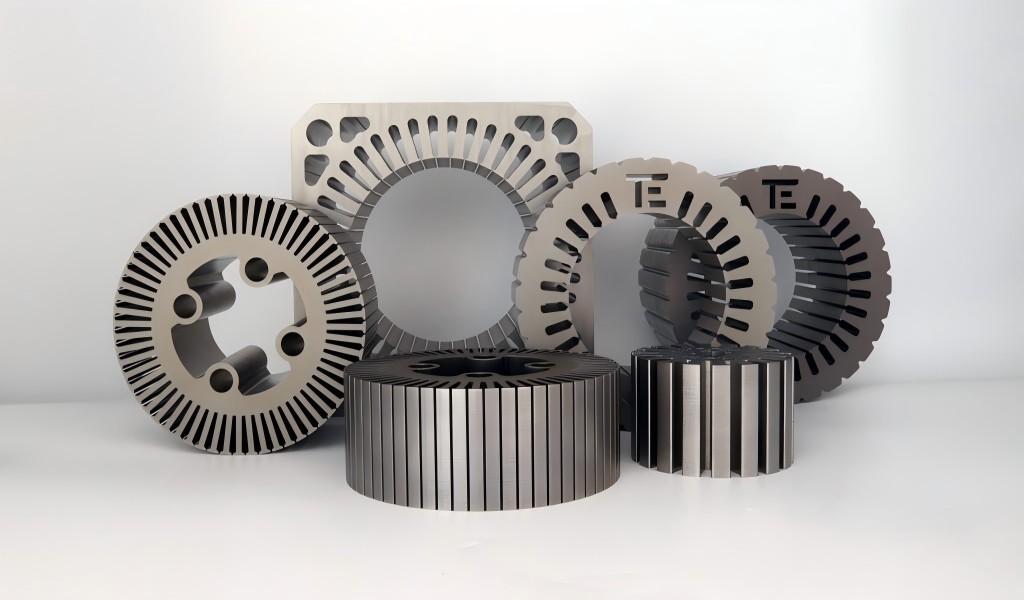As industries evolve, manufacturing methods must also adapt. Motor stators and rotors, key parts of motors and generators, have traditionally been made using established methods.
However, new technologies offer innovative ways to reduce costs, increase efficiency, and meet the rising demand for high-quality components. This article compares the costs of traditional and modern manufacturing methods for motor stators and rotors.
Traditional Manufacturing Methods
Traditionally, the production of motor stators and rotors relied heavily on manual processes, mechanical assembly, and simple stamping techniques. These conventional methods have served industries well for decades but come with limitations in terms of cost, speed, and consistency.
- Stamping and Laminating: One of the most common methods for producing stators and rotors involves stamping silicon steel sheets into thin laminations, which are then stacked together. Although this method works well, it is time-consuming and frequently wastes a lot of materials. The total cost of production is further increased by personnel and machine maintenance expenses.
- Winding: In traditional manufacturing, copper winding is often used to form the coils on the stator or rotor. The winding process typically involves hand or semi-automated techniques, which can be slow and prone to human error. This contributes to longer production times and potentially higher rejection rates.
- Assembly: Once the laminations are prepared and the windings are done, the stator or rotor is manually assembled. This final assembly stage requires precision and careful quality control, making it another area where labor costs are significant.
While these traditional methods have been successful in large-scale production, they come with drawbacks, including slower turnaround times, higher labor costs, and significant material waste. To address these challenges, new manufacturing methods have emerged in recent years.
New Manufacturing Methods
The latest advancements in manufacturing technology are revolutionizing the production of motor stators and rotors. These new methods aim to address the inefficiencies of traditional techniques and reduce overall production costs.
- Advanced Stamping with High-Speed Machines: Recent innovations in stamping technology, such as high-speed progressive stamping machines, offer more efficient and precise production of motor laminations. With little waste and little setup time, these devices can process large amounts of material. Furthermore, some of these high-speed machines are equipped with automatic feeding and alignment systems, which further streamline the production process.
- Automated Winding Systems: The introduction of fully automated winding systems has significantly improved the efficiency of the winding process. With machines that can precisely wind both round and flat copper wire, manufacturers can increase production speeds while maintaining high-quality standards. Additionally, automated winding technologies guarantee higher consistency in the final output and lower the possibility of human error.
- Laser Cutting and Precision Stacking: Laser cutting technology has made it possible to achieve highly precise cuts in both stator laminations and rotor cores. This method reduces material waste and ensures a more accurate final product. Furthermore, automated stacking systems can be connected with laser-cutting equipment to enable more precise and quicker assembly times.
- Use of Composite Materials: Some newer manufacturing methods also incorporate composite materials, such as high-strength plastics or carbon fiber, into the design of stators and rotors. These materials reduce weight and cost while providing improved performance attributes. Though still in the experimental phase, the potential for cost savings in mass production is significant.

Cost Comparison: Traditional vs. New Methods
To understand the cost differences between traditional and new manufacturing methods, we’ve compiled a comparison based on data from several manufacturers. The costs of manufacturing motor stators and rotors using both techniques are displayed in the table below.
| Manufacturing Process | Traditional Method | New Method | Cost Difference (%) |
| Stamping & Laminating | $0.15 per unit | $0.10 per unit | -33.33% |
| Winding | $0.20 per unit | $0.12 per unit | -40.00% |
| Assembly | $0.10 per unit | $0.05 per unit | -50.00% |
| Material Waste | 12% of total cost | 5% of total cost | -58.33% |
| Total Production Cost | $0.45 per unit | $0.32 per unit | -28.89% |
As shown in the table, the new manufacturing methods result in a substantial reduction in the total production cost. The most significant savings come from the reduction in labor costs due to automation, as well as the decrease in material waste achieved through advanced stamping and laser cutting.
Factors Contributing to Cost Reduction
Several factors contribute to the cost reductions offered by new manufacturing methods for motor stators and rotors:
- Labor Savings: Automating processes such as winding and assembly significantly reduces the need for manual labor. Manufacturers can reduce labor expenses and spend resources more effectively if fewer personnel are needed for repetitive operations.
- Reduced Material Waste: New technologies such as high-speed stamping and laser cutting allow for greater precision, resulting in lower material waste. Manufacturers can maximize their use of raw resources and lower expenses associated with production by reducing discarded materials.
- Faster Production Times: Automation and high-speed machines enable faster production cycles. What previously took hours or even days to complete can now be done in just a fraction of that time. Shorter production times mean faster turnaround, which directly impacts a company’s bottom line by increasing throughput and reducing lead times.
- Improved Quality Control: Advanced manufacturing techniques allow for better quality control. Defective components are less likely to be produced when automated systems are able to identify flaws early in the manufacturing process. This leads to fewer rejections and lower costs associated with quality control.
Industry Impacts and Future Outlook
The adoption of new manufacturing methods for motor stators and rotors is expected to have far-reaching implications across several industries, including automotive, aerospace, and renewable energy. As demand for electric motors continues to grow, manufacturers that adopt these technologies will gain a competitive edge by producing high-quality components more cost-effectively.
Furthermore, it is anticipated that production prices will continue to decline as these technologies advance and become more accessible. With advancements in material science, automation, and machine learning, future manufacturing methods may further reduce costs while improving the performance and durability of motor stators and rotors.
Conclusion
The shift from traditional to new manufacturing methods for motor stators and rotors is a key milestone in the industry. By using technologies like high-speed stamping, automated winding, and laser cutting, manufacturers cut costs and improve quality, efficiency, and sustainability. Clear labor, material waste, and production time savings are demonstrated by the cost analysis.



